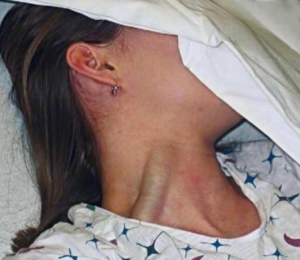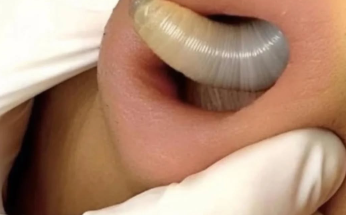
Massive Jugular Vein Distension: A Sign Not to Be Ignored
When it comes to physical signs that suggest a serious medical condition, jugular vein distension (JVD) is one that should never be overlooked—especially when it’s massive or pronounced. This striking physical clue can be a window into a patient’s cardiovascular health and often points to significant, sometimes life-threatening, underlying issues.
Jugular vein distension refers to the visible bulging of the jugular veins—the large veins in the neck that carry blood from the head back to the heart. Under normal circumstances, these veins may only be subtly visible or not visible at all in a healthy person at rest. However, when the pressure in the right side of the heart is elevated, the jugular veins can become visibly engorged and pulsatile, especially when a patient is lying at a 30 to 45-degree angle.
So, what causes this phenomenon, and why is massive JVD so critical to recognize?
Understanding the Physiology
The jugular veins reflect the central venous pressure (CVP)—a measurement of the pressure in the thoracic vena cava, near the right atrium of the heart. Elevated CVP often indicates that the heart is struggling to return blood effectively, leading to backflow or congestion. This is why the jugular vein becomes distended: it’s essentially a sign of blood backing up into the venous system.
Common Causes of Jugular Vein Distension
Massive or exaggerated JVD usually points to serious medical issues. Here are some of the key conditions associated with it:
1. Right-Sided Heart Failure
When the right side of the heart is unable to pump effectively, blood backs up into the venous circulation. This is one of the most common causes of JVD. Patients may also present with peripheral edema, hepatomegaly, and ascites.
2. Constrictive Pericarditis
This condition occurs when the pericardium (the sac surrounding the heart) becomes thickened or scarred, restricting the heart’s ability to expand. As a result, venous return is impeded, and pressure builds up in the jugular veins.
3. Cardiac Tamponade
A medical emergency, cardiac tamponade occurs when fluid builds up in the pericardial sac, compressing the heart. Classic signs include Beck’s Triad:
-
Hypotension
-
Muffled heart sounds
-
Jugular vein distension
Massive JVD in this scenario can develop rapidly and signals a life-threatening emergency requiring immediate intervention.
4. Tension Pneumothorax
In this dangerous condition, air gets trapped in the pleural space under pressure, pushing the mediastinum to the opposite side and impeding venous return to the heart. JVD can become prominent, and the patient may show signs of respiratory distress and hypotension.
5. Superior Vena Cava (SVC) Syndrome
SVC syndrome results from obstruction of the superior vena cava, which can be due to a tumor, thrombosis, or fibrotic process. The backup of blood causes massive JVD, facial swelling, and sometimes cyanosis.
6. Pulmonary Hypertension
Elevated pressure in the pulmonary arteries increases the workload on the right heart, eventually leading to right heart failure and JVD.
Assessment of Jugular Vein Distension
Properly assessing JVD requires a skilled eye and a good understanding of cardiovascular physiology.
Steps to assess JVD:
-
Position the patient at a 30- to 45-degree angle.
-
Use good lighting and observe the right side of the neck, as the right internal jugular vein is a more direct reflection of right atrial pressure.
-
Look for pulsations that rise and fall with the cardiac cycle.
-
Estimate the height of the distension above the sternal angle.
A JVD of more than 3–4 cm above the sternal angle is considered abnormal and suggests elevated right atrial pressure.
Why Massive JVD Is a Red Flag
Massive jugular vein distension doesn’t just look dramatic—it often is dramatic in its clinical implications. It suggests that the venous system is under severe strain, often due to a failing right heart or blocked venous return. It can indicate:
-
A rapidly deteriorating patient
-
The need for emergent interventions
-
A critical clue in diagnosing conditions like cardiac tamponade or tension pneumothorax
Ignoring this sign—or misattributing it to something benign—can delay life-saving treatment.
Associated Signs and Symptoms to Watch For
In patients with massive JVD, other symptoms or signs can provide further diagnostic clues:
-
Shortness of breath
-
Chest pain or discomfort
-
Peripheral edema (swelling of the legs and feet)
-
Hypotension or shock
-
Ascites (fluid in the abdomen)
-
Hepatojugular reflux (distension increases with liver pressure)
-
Facial or upper limb swelling (seen in SVC syndrome)
Diagnostic Workup
If JVD is detected, a focused workup is critical:
-
Echocardiogram – To evaluate heart function and rule out pericardial effusion or right heart dysfunction
-
Chest X-ray or CT scan – To assess for mediastinal masses, lung pathology, or pneumothorax
-
ECG – To detect arrhythmias or signs of right heart strain
-
Blood tests – Including BNP, troponin, and basic metabolic panel
-
Ultrasound – Particularly helpful in bedside evaluation (POCUS)
Management
The treatment of JVD depends entirely on its underlying cause. For example:
-
In heart failure, diuretics and afterload reducers are typically used.
-
Cardiac tamponade requires pericardiocentesis.
-
Tension pneumothorax must be relieved with needle decompression followed by chest tube placement.
-
In SVC syndrome, the underlying malignancy or thrombus needs to be addressed—sometimes with steroids, radiation, or stenting.
The presence of massive JVD should always escalate the urgency of treatment.
Final Thoughts
Massive jugular vein distension is not just a curious physical finding—it’s a powerful clinical signal that something serious is happening inside the chest. It reflects elevated central venous pressure, often due to right-sided heart problems, pericardial disease, pulmonary conditions, or obstructive syndromes. Prompt recognition and appropriate response can be the difference between life and death.
In emergency rooms, ICUs, and even general practice, understanding the significance of JVD can improve diagnostic accuracy and save lives. If you—or someone you’re caring for—shows signs of significant jugular vein distension, don’t ignore it. Seek immediate medical evaluation.
